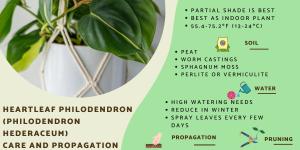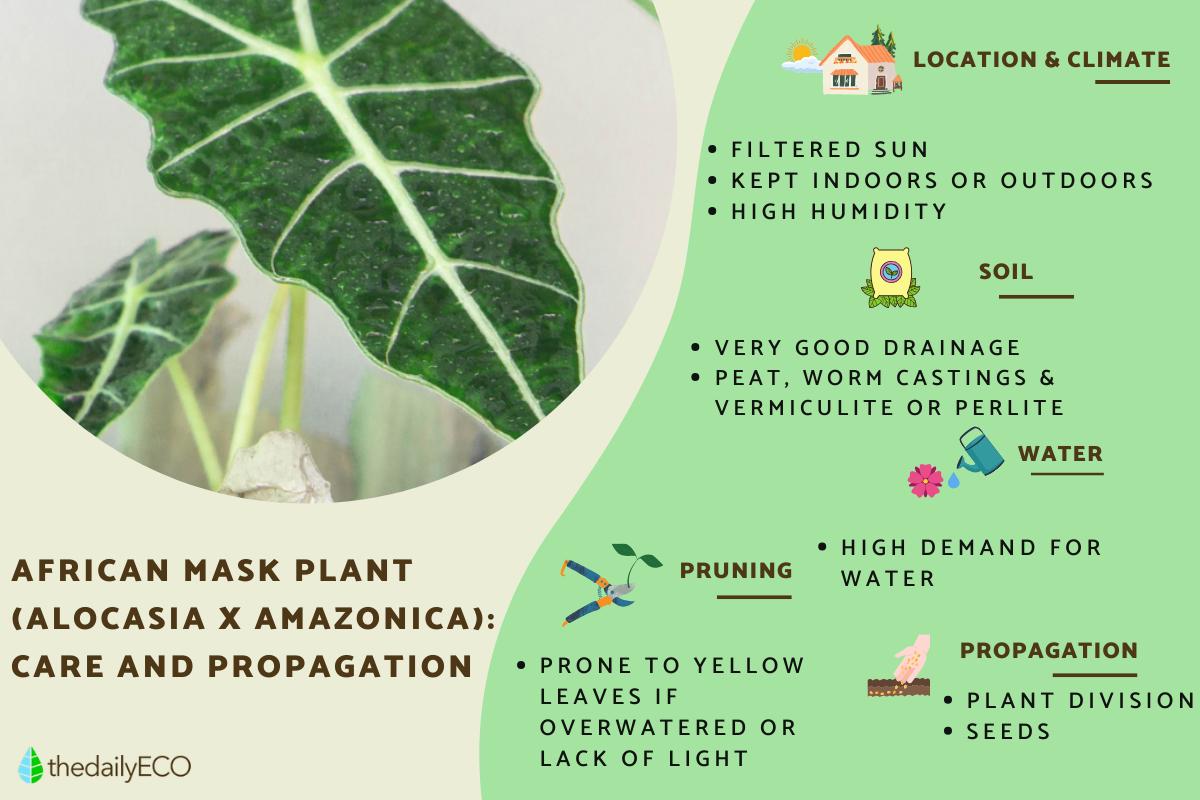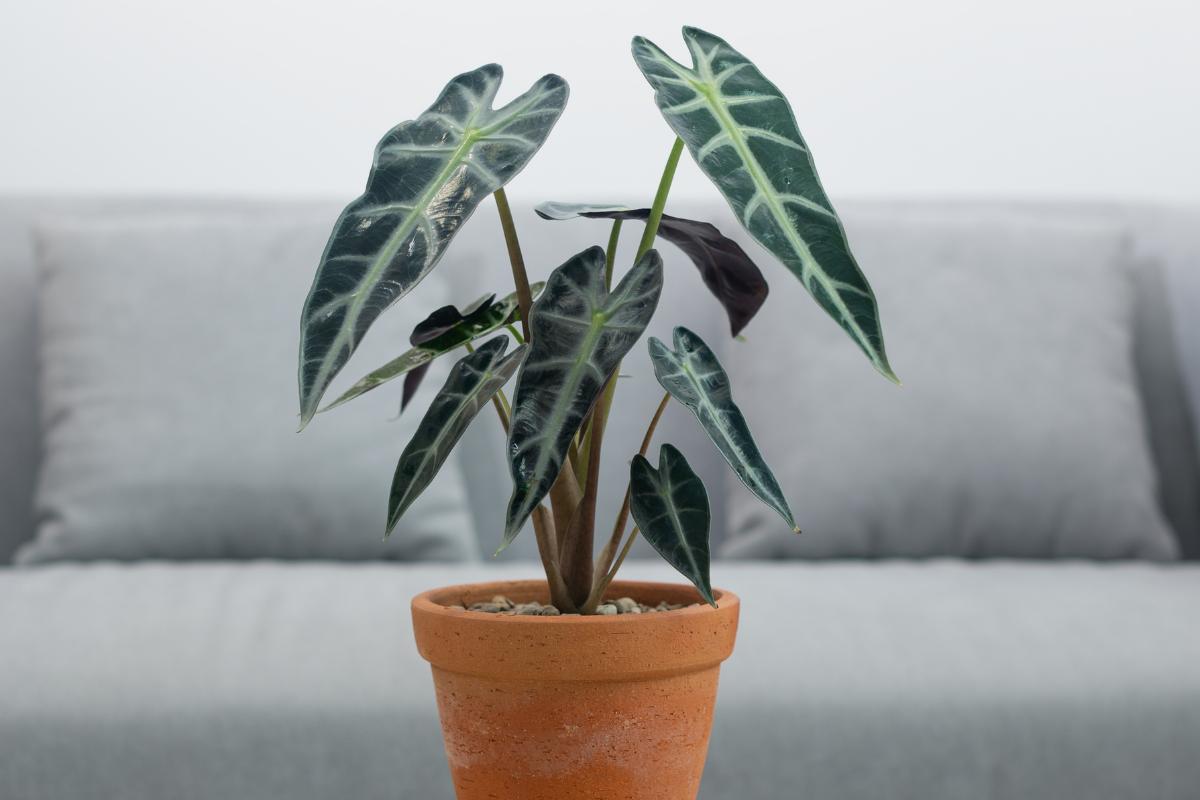African Mask Plant (Alocasia x Amazonica) Care Guide


Alocasia x amazonica is a popular hybrid known by the name of the African mask plant. Its care required filtered bright light, a minimum ambient temperature of 15-18 ºC (59-64.4 ºF), nourished soil with good drainage and high humidity. Yellow leaves in the African mask plant are due to excess watering, low ambient temperature or lack of fertilizer.
The genus Alocasia comprises large-leaved tropical plants native to Southeast Asia. Among them, we have the African mask plant, a hybrid that is written Alocasia x amazonica. It is an unnatural hybrid created by horticulturists, so it does not naturally exist in nature. It is one of the most popular houseplants you can buy, being used to decorate many different indoor spaces. See how to best keep it in your home with our thedailyECO African mask plant (Alocasia x amazonica) care guide.
Characteristics of African mask plants
Before we discover how to care for Alocasia x amazonica plants, we should look at its characteristics to know its needs:
- The leaves have contrasting white veins on a very dark and shiny green background. its texture is almost similar synthetic plastic or vinyl. They have a purple tint on the underneath of the leaves. These leaves are very large, about 24" (60 cm) long. They are lanceolate shaped, meaning they are similar to a spearhead.
- The stems are particularly thick in order to be able to support the large leaves.
- It grows up to 36" (90 cm) tall and 24" (60 cm) wide when it reaches full maturity.
- It belongs to the group known as aroid plants, meaning they belong to the family Araceae, so it has similar care to close relatives such as caladiums, philodendrons, syngoniums and related plants. Learn about how to care for syngonium plants in our related care guide.
If you like this plant and would like to have it in your home, you can use the link below to purchase an African mask plant for yourself:

Light, temperature and location of African mask plants
If you are wondering where to place your African mask plant in the home, you will need to consider the following:
- They need a bright, but not direct, light source. Plants from the genus Alocasia are native to thick jungles where the light is filtered by the tree canopies. We need to mimic this in the home by filtering light through a window or similar aperture to replicate such conditions.
- You can keep African mask plants outdoors if it has shade above it. For example, you can keep it under a balcony, entrance or under thick trees. If you have it indoors you should have it near a window that has plenty of light or in rooms well lit by natural light, but without direct impact. It is best if there is a curtain.
- If the light becomes too strong, as it happens in summer, move it a little further away from the window to prevent burning.
- It needs a minimum temperature of between 15-18 ºC (59-64.4 ºF), but not less. Remember that it is a tropical plant. If the temperature drops too much the plant will go dormant, which is observed with the leaves falling. At this point the substrate should not be allowed to dry completely because when the temperature increases it will re-emerge.
- It should be kept away from drafts.
- It can be placed in pots or directly in the ground. In the latter case, they must be placed with a distance of 12" (30 cm) between individuals, to allow for proper growth.
- They should be repotted when the roots begin to emerge from the holes or when the water runs out almost immediately. This is indicative that they need a larger planter space.
Learn about how to care for another veined indoor plant with our guide to caring for a nerve plant.

Soil and fertilizer for African mask plants
Alocasia x amazonica needs a soil very rich in organic matter, but with good drainage to prevent rotting. To do this, prepare a mixture of equal parts of sand, peat or black soil and worm castings or composted bark. Add a handful of coconut fiber to retain moisture in the substrate.
At the bottom of the container or the hole in the ground where it will be planted, pebbles of the drainage material that you chose for your mixture are placed as a bottom layer. This will help excess water drain. These materials can be vermiculite, perlite, small stones or lava rocks for plants. It can be fertilized 3 or 4 times a year with granular fertilizers or liquid fertilizers every other month.
Watering African mask plants
When we consider irrigation for African mask plants, it is important to ensure the following:
- They have a high demand for water. The Alocasia x amazonica will have bent stems as an indicator of lack of water. This is because it lacks the turgor that water exerts on the cells for the plant to be erect.
- In summer it has a higher demand for water and in winter irrigation should be spaced out more frequently.
- The leaves must be sprayed with water constantly.
- The substrate must always be kept moist. You have to be careful that it is not completely waterlogged. If you have difficulty keeping the humidity high because you live in a dry area, use a room humidifier or make your own by placing a tray with pebbles under the pot where you will place water. This will evaporate near the plant to provide humidity.
African mask plant propagation
This plant reproduces by dividing rhizomes, commonly known as plant division. This method is done in spring or summer. To do this, the plant is dug up and two individual rhizomes are divided from the root and placed in separate containers. Here you can learn more about Rhizomes: definition and examples of plants .
If you want to plant Alocasia x amazonica from seeds, you should sow them when the environment is exactly 23 ºC/73. 4 ºF. Place them to germinate in a seedbed or seedbed with a substrate of always moist worm castings, to accelerate growth.

Yellow leaves in African mask plants
It is common in temperate areas for this plant to have yellow leaves, but we will tell you how to solve it.
- Yellow leaves on Alocasia x amazonica mean excess water. This is solved by preparing a suitable substrate, with the instructions explained before, so that it has good drainage. Also check that the pot has holes and reduce watering.
- If you consider that the irrigation is fine and that there are no substrate problems, the yellow leaves may be due to lack of light. Although they can be kept indoors, make sure they receive filtered light.
- Other reasons may be low temperature, lack of fertilizer or lack of environmental humidity.
If you want to read similar articles to African Mask Plant (Alocasia x Amazonica) Care Guide, we recommend you visit our Plant care and cultivation category.
- Colletti, M. (2019). Living Decor: Plants, Potting and DIY Projects - Botanical Styling with Fiddle-Leaf Figs, Monsteras, Air Plants, Succulents, Ferns, and More of Your Favorite Houseplants. United States: Cool Springs Press.
- Neal, N. (2012). Gardener's Guide to Tropical Plants: Cool Ways to Add Hot Colors, Bold Foliage, and Striking Textures. United States: Cool Springs Press.
- Royal Horticultural Society (nd) Alocasia x amazonica. Retrieved from: https://www.rhs.org.uk/plants/96161/alocasia-amazonica/details
- Horst, D. (2020). Houseplants for All: How to Fill Any Home with Happy Plants. United States: HarperCollins Publishers.








